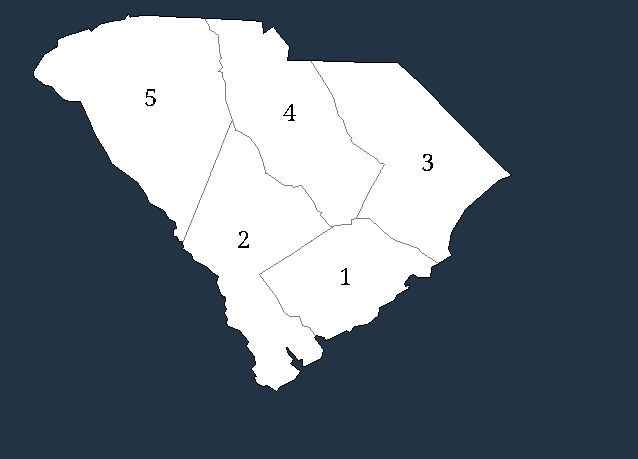American Psephology
The 1788 House Elections in South Carolina
On November 24 and 25, 1788, South Carolina elected five representatives from single-member districts to serve in the House of Representatives.
By District
The first district is the only one for which any returns survive (though they are still missing from three parishes). They are as follows:

| William L. Smith | Alexander Gillon | David Ramsay | |
| Federalist | Antifederalist | Federalist | |
| St. Michael and St. Philip | 349 | 169 | 146 |
| Christ Church | 17 | 6 | 18 |
| St. Andrew's | 28 | 24 | 8 |
| St. Bartholomew's | 70 | 150 | 0 |
| St. James Goose Creek | 34 | 3 | 4 |
| St. John's Berkeley | 12 | 11 | 10 |
| St. John's Colleton | 32 | 4 | 5 |
| St. Paul's | 30 | 19 | 0 |
| St. Dennis and St. Thomas | 28 | 0 | 0 |
| Total | 600 (50.98%) | 386 (32.80%) | 191 (16.23%) |
Aedanus Burke (antifederalist), won against Robert Barnwell (federalist), John Bull, and John Kean in the second district with a margin of 422 votes.
Daniel Huger (federalist), won against Joseph Page in the third district with a margin of 496 votes.
Thomas Sumter (antifederalist), won in the fourth district with a margin of 507 votes. There was no return from Chester.
Thomas T. Tucker (antifederalist), won against Henry Pendleton (who declined to be a candidate) in the fifth district with a margin of 759 votes.
Overview

Three antifederalists and two federalists were elected. More votes appear to have been cast for antifederalists in the state overall, as well, with a margin of perhaps 787, though no clear total can be ascertained due to the lack of proper party competition or returns throughout the state.